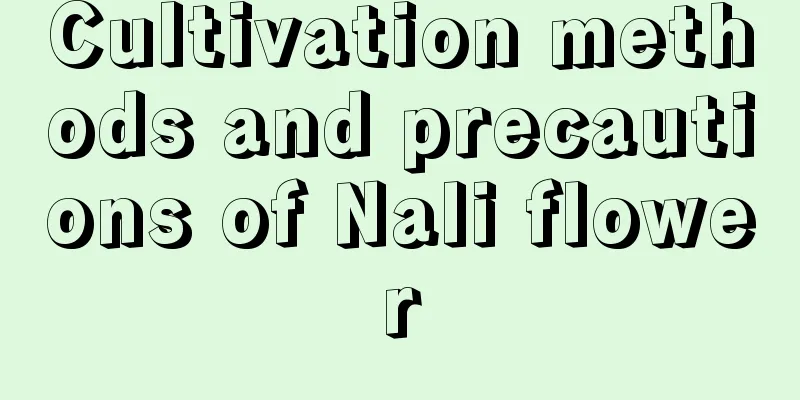Cultivation methods and precautions of Nali flower

How to grow Nali flowersPot soil selectionWhen growing Nari flowers, you can choose a flowerpot according to your needs. You can grow one bulb in a pot, and you can choose a smaller pot, or you can grow 3-4 bulbs in a pot, and choose a larger pot. When potting, choose soil with good drainage. You can mix peat soil, garden soil and perlite, and add a small amount of base fertilizer to prepare the soil. Light and temperatureNali flower likes warm and sunny environment. It has a certain degree of cold resistance, but is not resistant to high temperatures. Ensure that the Nali flower has a certain amount of light during its growth period. It can be placed in a semi-shaded place in spring and autumn. Avoid direct sunlight in summer and pay attention to shading. The maximum growth temperature should not exceed 30℃. It can withstand low temperatures, and the low temperatures in winter will not affect the growth of Nali flowers. Watering and fertilizingNali flower is not tolerant to water and humidity during its growth period and requires certain nutrients. A certain amount of base fertilizer needs to be applied when planting, and water should be poured once after potting. In spring and autumn, the potting soil needs to be kept moist, and liquid fertilizer should be applied once every half a month. In summer, which is a dormant period, you should water less. In winter, you need to control watering and stop fertilizing. Reproduction methodThe most common way to propagate Nali flower is by bulb division, but it can also be propagated by sowing or tissue culture. Things to note when growing Nali flowersPests and diseasesDuring the cultivation process of Nali flower, common diseases are soft rot and charcoal blast, and common pests are cutworm, white grub and thrips, which can cause great harm to the plants. RepottingFor potted Nari flowers, you need to care for them for a period of time after potting them before repotting or changing the soil, but it is not necessary to repot them every year. |
<<: Holly cultivation methods and precautions
>>: The cultivation methods and precautions of Allium macrocarpon
Recommend
How to grow soilless green radish more vigorously
Green ivy has good adaptability and does not have...
Difference between cucumber and melon
1. Leaf Difference The leaves of the cucumber are...
Four-season management of four-season primrose
Spring Management of Primrose After the flowers o...
What kind of soil is suitable for planting cones
Soil for meat cones Conus generally prefers sligh...
How to deal with dianthus after it blooms? Should the dried flowers be cut off after blooming?
Treatment after flowering of dianthus 1. Pruning ...
What to do if Osmanthus fragrans does not grow leaves
Reasons why Osmanthus fragrans does not grow leav...
How many seedlings should orchids be divided into? Introduction to the correct method of division
1. How many seedlings should orchids be divided i...
If you like to grow vegetables, you should have these tools at home
Shovel Used for transplanting seedlings and shove...
What is the best variety of Chunlan?
1. Song Mei It is especially popular in Zhejiang ...
The growth environment of Euphorbia gejin
1. Growth Environment 1. Sunlight: The environmen...
Cultivation methods and precautions of Ligustrum lucidum
1. Maintenance methods 1. Soil: The soil requirem...
This is how to grow hydrangeas indoors. Just cut a branch and plant ten pots without spending a penny!
Hydrangea propagation Hydrangea is very easy to p...
How many times does Mo Lan sprout in a year?
1. How many times does it sprout in a year? Gener...
When is the best time to plant sea buckthorn trees?
The best time to plant sea buckthorn trees Seabuc...
How to propagate jade ornaments
Breeding Tips Reproduction method Like other plan...









